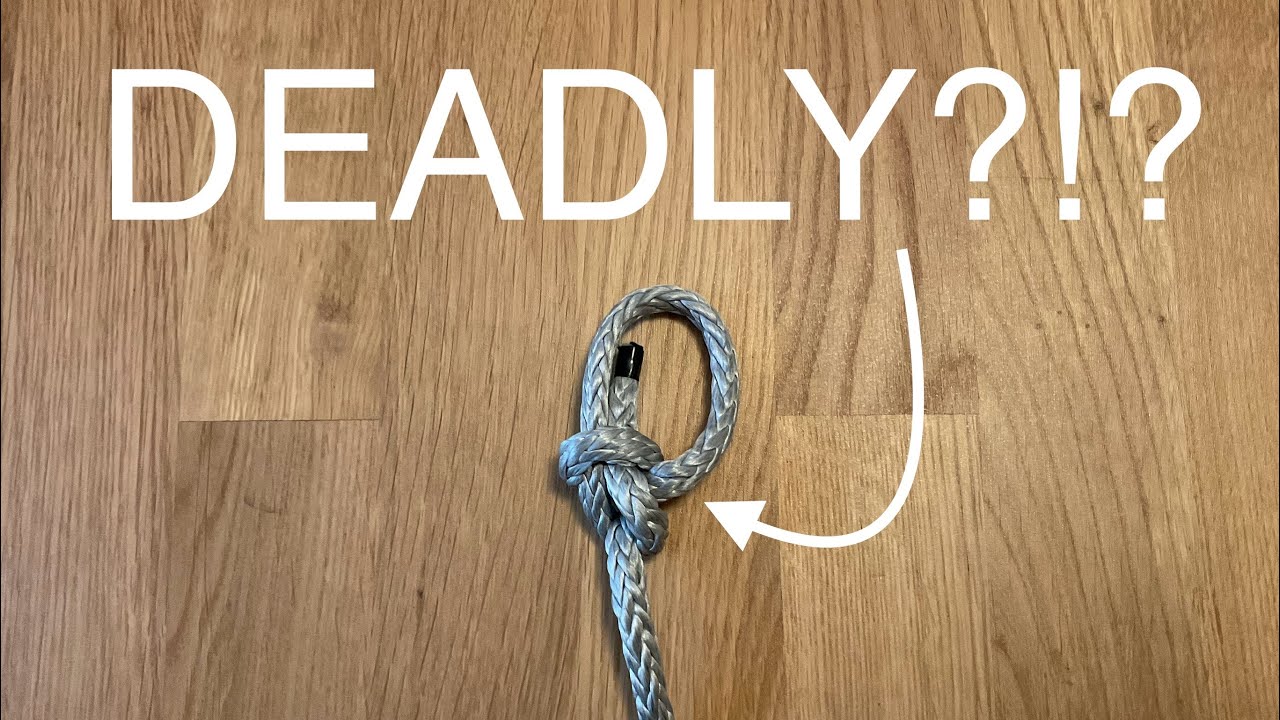Bowline este unul dintre cele mai populare noduri în navigație, deoarece se ține bine și se leagă și se dezleagă rapid. Și Dyneema este una dintre cele mai populare linii sintetice, deoarece este mai puternică decât oțelul. Dar Dyneema este alunecos și nodurile se pot smulge imediat, așa că unii spun că NICIODATĂ nu ar trebui să legați o funiță în Dyneema. În acest videoclip testăm puterea unui bowline Dyneema și vedem ce se întâmplă. Disclaimer: – Acest conținut este oferit exclusiv pentru educația și divertismentul dvs. – Nu există garanții, exprese sau implicite, cu privire la orice conținut sau potrivirea acestuia pentru un anumit scop. – Există riscuri de rănire, deces, beție și dificultăți financiare implicate în navigație. – Comandantul este întotdeauna responsabil pentru siguranța navei și a echipajului său. – Sailing Tips nu este răspunzător sau răspunzător în niciun fel pentru orice se întâmplă pe sau oriunde în apropierea ambarcațiunii dumneavoastră sau a oricărei ambarcațiuni pe care nu suntem în comandă. #howto #tie #bowline #knot #sailing #howtosail #learntosail #sailingtips
source
Nodul pe care se spune că nu ar trebui să-l legați niciodată!!!

22 thoughts on “Nodul pe care se spune că nu ar trebui să-l legați niciodată!!!”
Comments are closed.




everything fails before the bowline:D
In a pinch it will work and I would not worry, but if its part of a permanent solution just teach yourself how to splice it. Looks better, is safer and also quite fun and very satisfying. If you have to use a bowline on it, you could also make the tail end a bit longer than usual, just to be safe.
I learned to tie the buntline and prefer it for slippery lines, but I can't tie it blindfolded like a bowline!
There is also the historic Matthew Walker which can be tied to form an eye and is self-locking.
The bowline is a great knot, but you didn't really test its weakness as I understand it. Its weakness is that it can loosen up under intermittent tension. The Dyneema probably increases that risk, since it is slippery.
A more appropriate test would involve switching between having a taut line and having full slack. Maybe rig something to lift and drop a weight repeatedly
That said, I've never had a bowline come loose on me, although I typically use them under constant tension.
Fun channel. Thanks
I think it didn't slip out because of the electrical tape on the end.
I've spent over 35 years commercial fishing on the Bering Sea.
I've been to school for net mending, I know my knots.
Once while tendering Herring, I tied a boline to the brailer filled with herring. It was a poly line with lots of herring oil. It slipped out. Didn't hurt anyone. But there are limitations.
There are a many different bowlines if you really want it to hold do a double reff, meaning go around twice. We've tied bouys on crab pots using that, but we went around three times and then taped it. It holds and is easy to untie.
If you know a knot well enough, you should be able to tie it behind your back with little problem unless it requires larger action than you can manage. Tying it in front of you with your eyes shut solves that problem. Best I've managed so far is a button knot with my eyes shut.
Little dramatic but ok. All my shrouds are in dynima on my F22 trimaran. On a 28 foot monohull of a friend, same thing and there is some permanet tention on it
Try again with no tape on the end.
Watch How Not 2 for a zillion measured breaktests.
Hmmm… Knots in dyneema is just bad karma. Just as knots in nylon didn't behave like knots in hemp or other natural fiber, knots in dyneema don't behave like knots in nylon. Knot setting, strength, and stability is a much greater issue.
"How bad are knots in Dyneema?" https://www.youtube.com/watch?v=MdA9mdDlJ6Y
The title of this video is great…for a different video.
Brilliant keep up the investigation into myths spread by people making money out of clicks on YouTube. Love the footage from your tri!
Why the title then which is the compete opposite of the point of the video? Idiot.
We race a lot and use Dyneema a lot. All halyards are tied as bowlines in Dyneema. Last year, we had a genoa halyard break. But the bowline did not slip. If you're worried about it, tie a stopper in the bitter end of the bowline.
A figure 8 knot in the tail of the bowline will prevent slippage.
So, what's „The Knot You Should NEVER Tie”?
The only knot I use. Can you tie it with one hand.
This knot may FAIL. I fly big kites when I kiteboard, and use my personally invented technique called Power Looping. It puts tremendous strain on my coated dyneema kite lines. I don't use bowlines, because they fail – since they will cut themselves – as I've learned the hard way. I tie a figure 8 slipknot, and those don't fail. You can actually see the line cutting itself in your experiment – as the line slips, heats up and melts itself.
Click bait!